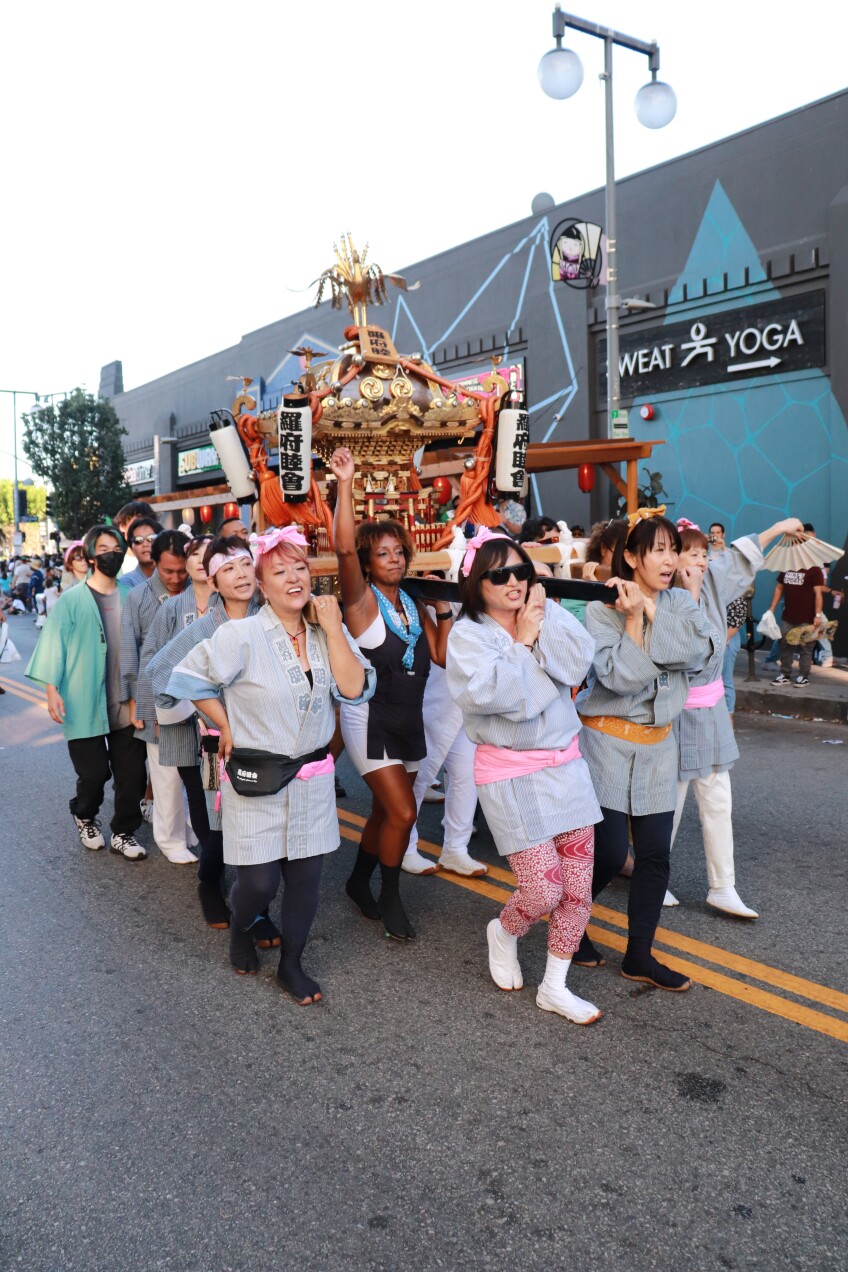Photo Essay: Nisei Week Celebrates Its 80th Year In-Person

From Japanese pop stars and taiko drummers to folk dancers, around 20 different groups marched through the intersection of Central Avenue and 2nd Street in Little Tokyo last Sunday to celebrate the 80th Nisei Week, drawing crowds from around Los Angeles and even out of state.
The word nisei is a term that describes the generation of Japanese Americans who were born and raised in the U.S. and Canada while their parents were born in Japan. First held in 1934, Nisei Week in-person celebrations have only been canceled twice: during the World War II-era Japanese American incarceration and, most recently, the height of the Coronavirus pandemic.
"Being able to do things live and in person is very different from our virtual event we did last year," says Nancy Okubo, one of the co-presidents of the Nisei Week Foundation. "Seeing so many people out [supporting], asking us when these things are going to happen if they're going to be happening — it is wonderful."

Keith and Wendy Kowta are respectively fourth and third-generation Japanese Americans. Keith grew up attending Nisei Week and his grandparents have been honored in past parades for their contributions to the local religious community. This past weekend, Wendy and her daughters dressed in kimonos and danced in the Grand Parade with Azuma Kotobuki Kai, a Japanese classical dance studio based in Ventura County. Once L.A. locals, the Kowtas had driven almost every weekend leading up to Nisei Week from their new home in Henderson, Nevada to Southern California for practices.
"We just recently moved. So we're still we're hoping to find [a Japanese American community]," says Wendy. "But we'll keep coming back and continue dancing with the group because they meet once a month."

The Grand Parade also brought in the Shibutani siblings who led the festivities as Parade Marshalls. Since Alex and Maia Shibutani made history by winning bronze as the sibling duo on the ice at the 2018 Winter Olympics, they've been representing Japanese Americans and Asian Americans internationally. As the Parade Marshalls, they're using the opportunity to bring visibility to a more local Japanese American community since they officially moved to the greater Los Angeles area in the fall of 2018.
The siblings see their responsibility to maintain the history and show public support for events like these because the Japanese American community is always on their minds, says Maia Shibutani.
"We were representing Team USA, we were representing siblings all around the world," says Alex Shibutani. "But having this community now feels so meaningful to us. While we knew that we were representing Japanese Americans, to see faces and to have names behind that community, it's very emotional actually."

The organizers of Nisei Week are all volunteers putting in their time as a labor of love. Cory Hayashi, the other co-president of the Nisei Week Foundation, attended Nisei Week as a child and has fond memories of being connected to a larger Japanese American population every year.
"Little Tokyo has always been special to me. I grew up in Orange County, so there wasn't a lot of Japanese or Japanese American, Asian American representation growing up," says Hayashi. " Being able to come to Little Tokyo was one of the only ways I actually really got to connect with my heritage."

At gift shop Bunkado, the second oldest business in Little Tokyo, Irene Tsukada Simonian looks on at the parade with bittersweet sentiments. Simonian's aunt and uncle opened Bunkado right after World War II. As the third generation in her family to manage this store, she has seen Little Tokyo geographically decrease in size over the years as Japanese Americans have relocated and businesses have closed. Although she's sad in some ways to see the population shrinking, she's also amazed by the history and the traditions that have been sustained over the decades.
"I'm just glad that the same week has continued for 80 years. It's pretty remarkable for a small community like this," said Tsukada. "I'm also delighted that so many people are interested to come here and watch the parade and go to the exhibits. So I look at it as 'It's a great accomplishment that it's still as vibrant as it is.'"
Nisei Week festivities are ongoing through August 21. Check Nisei Week's full schedule for details.
Scroll down to view more photos from the 2022 Nisei Week Parade.













